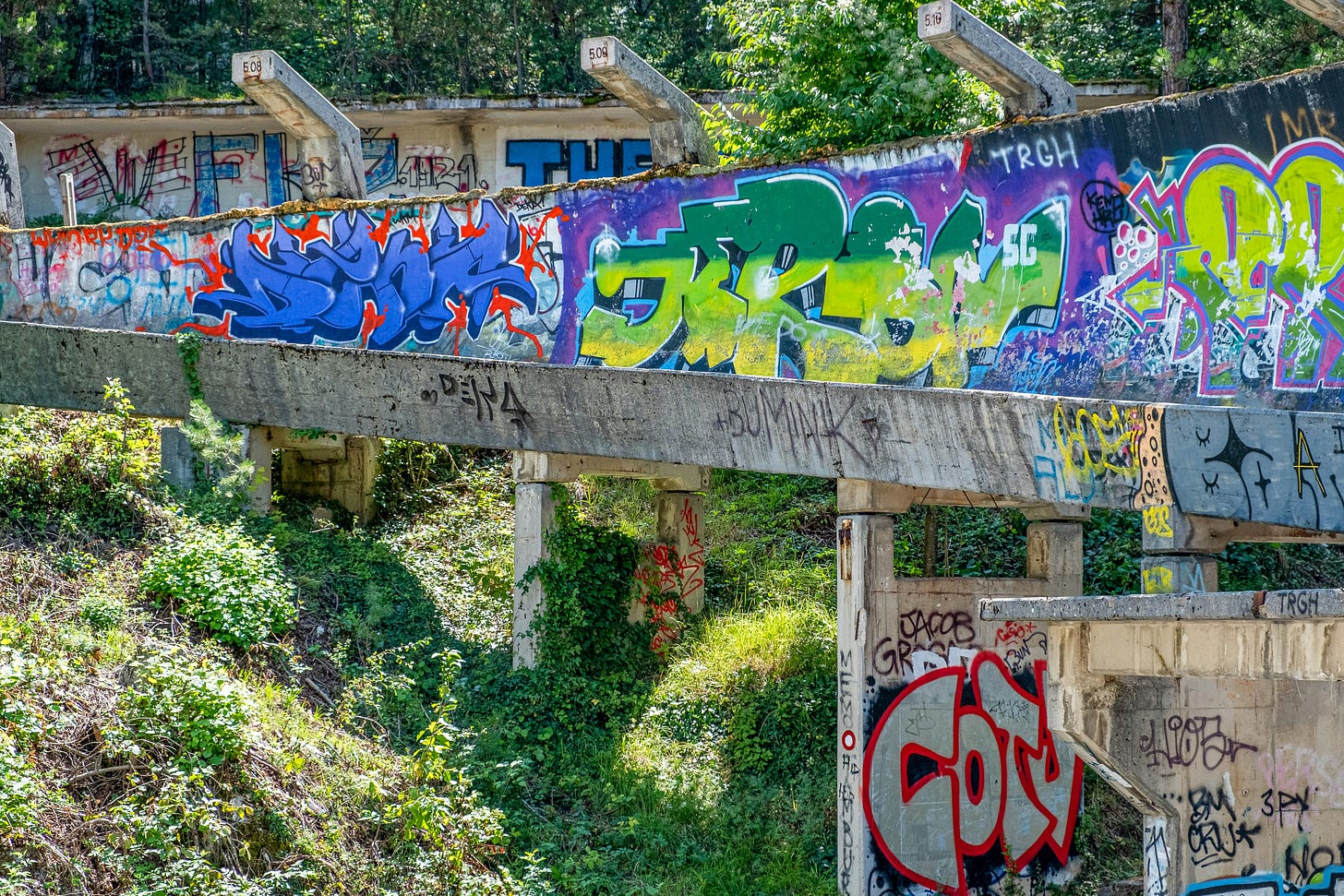Nestled in the slope of Mount Trebevic, Sarajevo’s bobsleigh tracks winds through the bitten memories of Bosnia and Herzegovina’s history. Built to host the luge and bobsleigh in the 1984 Winter Olympics, the track runs at 1,300 metres, lacerating the mossy mountainside with twelve sharp turns and forming a total drop of one hundred and twenty-five metres. Concrete slabs cemented onto concrete stilts may give the impression of a lifeless structure, but Sarajevo’s bobsleigh track has led far from a dormant life.
The 1984 Winter Olympics in Sarajevo marked a deeply memorable year for both the nation and the international sporting community. After sixty states boycotted the 1980 Olympics in Moscow in defiance of the Soviet invasion of Afghanistan the previous year, Sarajevo achieved global success in terms of attendance and international union. Debuting in the 1983 European Bobsleigh Championship, the track hosted tens of thousands of spectators for both the luge and bobsleigh in the games.
The mammoth share of the golds and silvers went to the German Democratic Republic, but Great Britain also had multiple teams completing the track successfully. With adrenaline rushing almost faster than the athletes as they blitzed seamlessly at eighty miles an hour down the iced bank, it was an atmosphere of chilling delight. But in the years that followed, that chill froze into dread.
When the Bosnian Serb forces blockaded Sarajevo in the breakup of the former Yugoslavia, it began the longest siege of any capital city in the history of modern warfare. The Bosnian war itself lasted just under four gruelling years and resulted in the death of 13,952 people, with 5,434 of those being civilians. Cut off from food, medicine, water and electricity, many perished in the arduous conditions of the city alone, on top of the fact Sarajevo was struck with an average of over three hundred shells a day. The track was far from unscathed.
Adopting the role of an urbanised trench, the bobsleigh track became an artillery site in the years of the war. The once iced concrete is now punctured with pellet scars and firing holes: once a place for the games but never a place to play. The medal podium became an execution podium in the war. From medals to armament, the weight of metal bloated on tyranny. One of the five Olympic rings on the abandoned ski jump on Bosnia’s Mount Igman was snapped at the neck. Unity was broken.
Yet it seems the serpentine anatomy of the track indeed symbolises its rebirth. The track is now enamelled in graffiti—vibrant expressions of creativity, expressions of life, blanket bloody memories, a new membrane of hope. Nowadays, hikers tread the archives of the Sarajevo bobsleigh track, gorging on its art and cycling through its beaten but brightened curves. A cable car now allows increased access to enjoy the site. Under a grant from the International Luge Federation, the track underwent a restoration project in 2014, clearing its overgrowth and facilitating it as a practice space for Eastern European sledding teams. The bliss of sport and adventure has once again been restored in this historic site, its snaky weaves fertilising a new era of liberty.




